Best x86 SBCs You can Buy in 2022
There are tons of single-board computers (SBCs) on the market for all uses and budgets. While many use an ARM architecture and are thus limited in what operating systems (OSes) they can actually run, x86 maker boards offer the utmost compatibility with Linux distributions as well as Windows. What's more, many x86 development boards deliver desktop PC replacement performance. Check out the best x86 SBCs on the market!
PLEASE NOTE: Due to the global chip shortage many SBCs are currently out of stock. Check availability on the Electromaker store now.
What is the x86 Architecture?
x86 is a set of architectures developed by Intel that was based on its 8086 microprocessor and the 8088 derivative. The term x86 spawned as a 16-bit instruction set meant for 16-bit processors such as the 8086 and 8088, but later morphed into 32-bit instruction sets for 32-bit processors. So essentially, x86 designates 32-bit processors. Later, it was expanded to 64-bit with x86-64. For most x86 SBCs, the chipset is x86-64 such that running a 64-bit version of Windows or Linux is possible.
x86 vs. x64 - What's the Difference?
Whereas x86 CPUs are 32-bit, x64 refers to a 64-bit CPU. Both x86 and x86 devices can run tons of operating systems. Colloquially, x86 refers to 32-bit CPUs while x64 designates 64-bit processors. But x86-64 is a 64-bit version of the x86 instruction set. Normally, x86 processors are limited to 4GB of RAM, while x64 CPUs can use more than 4GB of RAM. Bits are represented by a 1 or a 0 in a binary system. Accordingly, a 32-bit system can hold 2^32 or about 4.29 billion different values which works out to about 4GB. Compare that to a 64-bit system which can handle 2^64 or about 18,446,744,073,709,551,616 compared to 4,294,967,296 in a 32-bit system.
ARM vs. x64 vs. x86 - What is ARM?
The ARM architecture is a Reduced Instruction Set Computing (RISC) architecture designed for system-on-chip (SoC) or system-on-module (SoM) hardware. x86 and x64 are on the flip side Complex Instruction Set Computing (CISC) processors with much higher logic capabilities for decoding machine instructions. Essentially, ARM is a much simpler architecture which translates to lower energy consumption. On the flip side, that also means power production will be hampered. The processing power that ARM can handle is physically smaller than x86 or x64. Many mobile devices such as phones and tablets, streaming devices, as well as single-board computers like the Raspberry Pi utilize an ARM architecture. But ARM processors have made incredible advancements, so newer ARM processors can yield CPU performance on par with x86 and x64-based laptops and desktops.
But software compatibility means that ARM devices can only run OSes designed for ARM processors. For instance, the Raspberry Pi can run Ubuntu, albeit a version of Ubuntu Linux specifically engineered for the Raspberry Pi. It might look similar to the version running on your desktop, but its underpinnings are different.
What OSes can an x86 SBC Run?
The obvious advantage to an x86 single-board computer is the ability to run Windows 10. For a 64-bit versions of Windows, you'll need at least 2GB of RAM while less than 2GB of RAM will only run a 32-bit version of Windows. Aside from Windows, you can run many Linux distros like Ubuntu, Debian, Manjaro, Arch, and Pop!_OS. Granted, lots of Linux distributions include ARM releases for maker boards like the Raspberry Pi. But a non-Arm Linux OS will afford greater capabilities. Moreover, you can find Android x86 images such as Android-x86 and Phoenix OS. Further, you can find x86 Chrome OS images for using an x86 SBC as a do-it-yourself Chromebox.
Best x86 SBC Overall - UDOO Bolt
The UDOO Bolt is an absolutely outstanding maker board. With AMD Ryzen Embedded V1000 processing power at its core, the UDOOO Bolt boasts incredible bang for your buck. It's available as an AMD Vega 3 UDOO Bolt V3 or a Vega 8 UDOO Bolt V8. The UDOO Bolt V3 features an AMD Ryzen Embedded V1202B dual-core four-thread @2.3Ghz processor while its V8 counterpart rocks an AMD Ryzen Embedded V1605B quad-core eight-thread @2GHz processor. Both UDOO Bolt variants offer dual SO-DIMM RAM slots with 64-bit DDR4 2400 RAM support for up to 32GB of RAM. Since the UDOO Botl is an x86 single-board computer, it can run Windows 10 as well as Linux operating systems like Debian, Ubuntu, Pop!_OS, Manjaro, Arch Linux, and a bevy of others.
Unlike many SBCs, the UDOO Bolt allows for expandable memory. Similarly, whereas most maker boards are limited to microSD cards or eMMC modules for hosting an OS, the Bolt sports a SATA III connecator alongside an eMMC module. Its pair of HDMI 2.0 ports and dual DisplayPort outputs via USB Type-C let you drive four 4K displays at 60 frames per second simultaneously. Connectivity is fantastic with Gigabit Ethernet, Bluetooth 4.0, 802.11ac Wi-Fi, and an Arduino-compatible microcontroller with up to 26 digital I/O (input/output) pins.
Unfortunately, the UDOO Bolt is pretty pricey at around $400 USD. However, that cost is justified since the UDOO Bolt yields desktop and laptop replacement capabilities. The AMD Ryzen V3 and V8 graphics are strong enough to max out many older titles, run high-end emulators including Dolphin for Nintendo Wii and GameCube emulation, as well as PlayStation 3 games using the RCPS3 emulator. Many modern AAA titles can run at high to medium settings on the Bolt. What's more, the Bolt is perfect for maker projects because of its built-in Arduino-compatible microcontroller. And its x86 architecture lets you run a full-on version of Windows 10 or Linux distros such as Ubuntu. Powerful and versatile, delivering desktop power in an ultra-small form factor, the UDOO Bolt is the best x86 single-board computer on the market.
Pros:
- Powerful AMD Ryzen Embedded CPU and GPU combo
- x86 architecture - can run Windows 10 and Linux OSes (i.e. Ubuntu, Debian, Manjaro,
- AMD Ryzen Embedded V1000 chip with Vega 8 or Vega 3 graphics
- Excellent connectivity including an Arduino-compatible microcontroller onboard
- Up to 32GB of DDR4 RAM
- Great for AAA gaming, high-end emulation (GameCube, Wii, Wii U, PS3 emulation), VR, and AI
Cons:
- Pricey
- Larger than most SBCs like the Raspberry Pi but still small
Udoo Bolt specs:
- AMD Ryzen Embedded V1000 with Microchip Atmega32U4 MCU: V1202B — 2x (4x thread) Ryzen cores @ 2.3GHz/3.2GHz boost with Radeon Vega 3, or Microchip Atmega32U4 MCU V1605B quad-core, (8x thread) Ryzen cores @ 2.0GHz/3.6GHz boost with Radeon Vega 8 graphics
- Memory/storage: 0GB, 4GB, 8GB, or 16GB DDR4-2400 RAM with ECC support via 2x sockets (supports up to 32GB)
- 32GB eMMC 5.0
- M.2 B-Key 2260 for SSDs (also supports PCIe x2)
- M.2 M-Key 2280 for NVME storage modules (also supports PCIe Gen 3 x4)
- SATA III connector with SATA power
- 802.11ac and Bluetooth 4.0
- Gigabit Ethernet port
- Dual HDMI 2.0a ports, dual DisplayPorts available through dual-role USB 3.0 Type-C ports
- 4 x simultaneous 4K@60 displays
- Radeon Vega 3 or 8 graphics with DirectX 12, OpenGL, and Vulkan support; H.265 decode and (8-bit) encode, VP9 decode
- Headphone/mic combo jack
- 2 x USB 3.1 ports
- 2 x USB 3.0 Type-C
- Arduino-compatible MCU I/O: Up to 26x digital I/O (includes up to 7x PWM)
LattePanda Delta
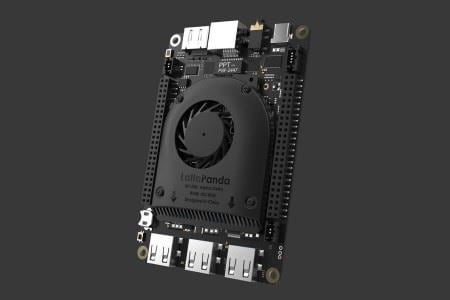
The LattePanda Delta is an affordable x86 SBC. At its core, you'll find an Intel Celeron N4100 quad-core CPU clocked at 1.1-2.4GHz. That's mated to an Intel UHD Graphics 600 integrated GPU (iGPU). For Internet connectivity, the LattePanda Delta includes dual-band 802.11ac Wi-Fi and Gigabit Ethernet, plus there's Bluetooth 5.0. There's USB 3.0, USB Type-C, and dual M.2 PCIe ports. An Arduino ATMEL 32U4 co-processor comes standard.
Because of its Intel Celeron N4100 CPU, the DFRobot LattePanda Delta can run Windows 10, Linux distros like Ubuntu, and more. The Celeron N4100 has a Passmark rating of 2468 which is respectable, particularly for the price. Though the LattePanda Delta isn't going to win any benchmarking tests, it's more than enough for basic tasks, and its CPU/GPU combo trounces most single-board computers such as the Raspberry Pi. What's more, its PCIe slot allows you to add peripherials like dedicated GPUs. Although the Celeron processor will bottleneck high-end GPUs for gaming purposes, you can use the Delta for tasks such as artificila intelligence, machine learning, and other projects.
Pros:
- Intel Celeron N4100 quad-core CPU @1.1-2.4GHz
- Intel UHD Graphics 600 iGPU
- Can run Windows 10, Ubuntu, and more
- Excellent connectivity - dual-band Wi-Fi, GIgabit Ethernet, USB 3.0, USB Type-C
- Includes Arduino co-processor
- M.2 PCIe slot, can be used with peripherials such as dedicated GPUs
- Good price-to-performance ratio
Cons:
- Middling CPU
LattePanda Delta specs:
- Intel Celeron N4100, Quad-Core 1.1-2.4GHz
- Intel UHD Graphics 600
- Dual-Band 2.5GHz/5GHz Wi-Fi & Bluetooth 5.0
- USB3.0 x3,USB Type-C x1
- Gigabit Ethernet
- 2 x M.2 PCIe (Support B&M Key and A&E Key)
- Support Windows 10 & Linux OS
- Integrated Arduino Coprocessor ATMEL 32U4
ODYSSEY X86J4105
Seeed Studio makes a fantastic x86 maker board in its Odyssey X86J4105800 SBC. Because of its x86 architecture, the Odyssey X86J4105 can run Windows 10 as well as a plethora of Linux distros. Connectivity is spectacular with Wi-Fi, Ethernet, and Arduino-compatibility through its GPIO pins. What's more, the GPIO pins maintain functionality with lots of Raspberry Pi accessories. Powered by an Intel Celeron J4105 CPU clocked at 1.5-2.5GHz mated to an Intel UHD 600 iGPU, the Odyssey X86J4105 is a competent development board.
At around $300 USD, it's a bit pricey compared to most ARM-based SBCs, but fairly priced in relation to most x86 dev boards. The Intel CPU could be a bit stronger, but the UHD graphics 600 is strong enough for most tasks. Its baked-in Arduino co-processor and Raspberry Pi-compatible GPIO header add tons of value for maker projects such as robotics. Moreover, the Odyssey X86J4105 sports dual M.2 PCIe slots for even further expansion.
Pros:
- Powerful CPU
- Excellent connectivity
- Arduino co-processor built-in
- Intel Celeron CPU
- Runs Windows 10 and x86 Linux distros
- Raspberry Pi 40-pin compatible GPIO header
Cons:
- Intel HD integrated graphics and Celeron Processor aren't the strongest
- Expensive compared to most ARM SBCs, about average for x86 dev boards
Odyssey X86J4105800 specs:
- CPU: Intel Celeron J4105 @ @ 1.5–2.5GHz
- GPU: Intel UHD Graphics 600 @ 250–750MHz
- Co-processor Microchip ATSAMD21G18 32-Bit ARM-Cortex M0+
- LPDDR4 8GB
- Wi-Fi
- Bluetooth
- 64Gb eMMC (optional)
LattePanda Alpha
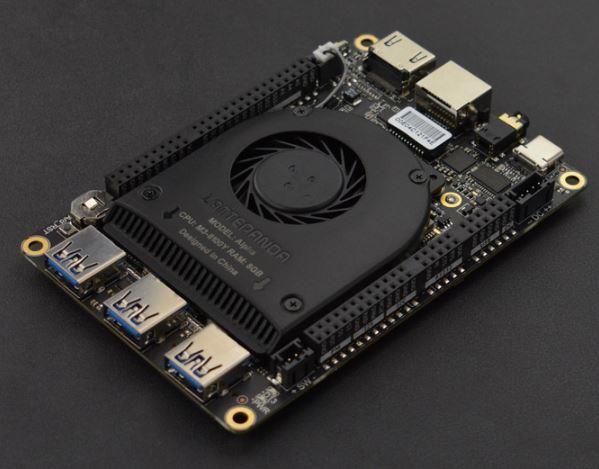
The DFRobot LattePanda Alpha is a superb x86 SBC. Powered by an Intel Core M3-8100Y dual-core processor clocked at 1.1GHz-3.4GHz paired with an Intel UHD graphics 615 iGPU, the LattePanda Alpha is a fantastic maker board capable of running Windows 10 and a whole host of other OSes. It's got 8GB of LPDDR3 RAM, an Arduino Leonardo ATMEL 32U4 co-processor, and great I/O. Onboard, you'll find HDMI, I2C, PCIe, I2S, SATA, UART, and USB.
The Intel Core M3-8100Y dual-core CPU might not be the beefiest, although it did manage to best the Lenovo C50 i5-5200U version and MacBook M3-7y32 in certain Geekbench benchmarks. Since the LattePanda Alpha sports PCIe slots, you can connect desktop GPUs. And although the Core M3 CPU will prove a bottleneck for high-resolution gaming at 4K, you can pull in respectable frame rates at 1080p on medium-high for AAA titles. The price is a bit hefty at around $400 USD, but its versatility makes the LattePanda Alpha a great desktop-replacement-worthy x86 maker board.
Pros:
- Intel Core Intel Core M3-8100Y dual-core CPU @ 1.1-3.4GHz
- Intel UHD Graphics 615 iGPU
- Great I/O
- Built-in Arduino co-processor
- Runs Windows 10, Linux distros, and more
- PCIe slot allows you to hook up desktop GPUs
- Desktop-replacement performance
Cons:
- Not the strongest GPU/CPU combo
- Expensive
LattePanda Alpha 800S/864S specs:
- Dimensions - 115 mm x 78 mm x 14 mm
- Intel Core M3-8100Y dual-core @ 1.1-3.4GHz
- GPU: Intel UHD Graphics 615 iGPU
- RAM: 8GB LPDDR3
- Interfaces: HDMI, I2C, I2S, PCIe, SATA, UART, USB
- Arduino Leonardo ATMEL 32U4 co-processor
LattePanda Alpha 864S specs:
- Same as the LattePanda Alpha 800S with 64GB eMMC module added
UDOO x86
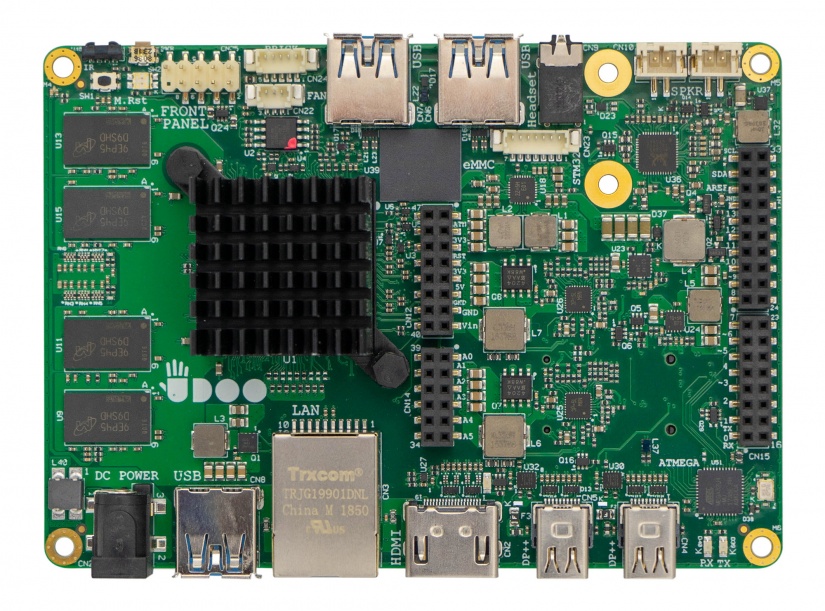
As its name suggests, the UDOO x86 is an x86-based maker board. Fusing solid computing capabilities with a low price tag, the UDOO x86 is an affordable dev board. The UDOO x86 comes in two variants: while the UDOO x86 Ultra sports an CPU Intel Pentium N3710 2.56 GHZ and an Intel HD Graphics 405 iGPU along with 8GB of DDR3 RAM, the Advanced instead opts for an CPU Intel Celeron N3160 2.24 GHz, Intel HD Graphics 400, and 4GB of DDR3. Both boards come with an x86-64 architecture and can run 64-bit OSes like Windows 10 and Ubuntu. Additionally, the UDOO x86 touts an Arduino Leonardo co-processor for running Arduino sketches and libraries straight on the UDOO. The possibilities are nearly endless on the UDOO x86, from basic desktop use to gaming, streaming video and music, audio and video editing, plus Arduino tinkering.
Pros:
- CPU Intel Pentium N3710 2.56 GHZ (UDOIO x86 Ultra)/Intel Celeron N3160 2.24 GHz (UDOO x86 Advanced)
- Intel HD Graphics 405 iGPU (Ultra)/Intel HD Graphics 400 (Advanced)
- 8GB (Ultra)/4GB (Advanced) DDR3 RAM
- Runs Windows 10, Ubuntu, and more
- Arduino Leonardo co-processor
- Reasonably-priced
Cons:
- Not the strongest GPU/CPU combo
- Only DDR3 RAM
- No built-in Wi-Fi
UDOO x86 Ultra specs:
- CPU: Intel Pentium N3710 2.56 GHz
- GPU: Intel HD Graphics 405
- 8GB LPDDR3 RAM
- 1 x HDMI, 2 x miniDP++ connectors
- 32GB eMMC storage, SATA connector, M.2 Key B SSD slot, microSD card slot
- Gigabit Ethernet, optional M.2 Wi-Fi module
- 3 x USB 3.0 Type-A sockets
- 1 x UART, 1 x I2C, 1 x SPI
- Arduino Leonardo co-processor (ATmega32U4)
- Dimensions: 120 mm x 85 mm - 4.72 inch x 3.35 inch
- 12 x analog I/O pins
UDOO x86 Advanced specs:
- CPU Intel Celeron N3160 2.24 Ghz
- Intel HD Graphics 400. Up to 640 MHz
- 4GB DDR3 RAM
- 1 x HDMI, 2 x miniDP++ connectors
- 32GB eMMC storage, SATA connector, M.2 Key B SSD slot, microSD card slot
- Gigabit Ethernet, optional M.2 Wi-Fi module
- 3 x USB 3.0 Type-A sockets
- 1 x UART, 1 x I2C, 1 x SPI
- Arduino Leonardo co-processor (ATmega32U4)
- Dimensions: 120 mm x 85 mm - 4.72 inch x 3.35 inch
- 12 x analog I/O pins
Up Board Xtreme
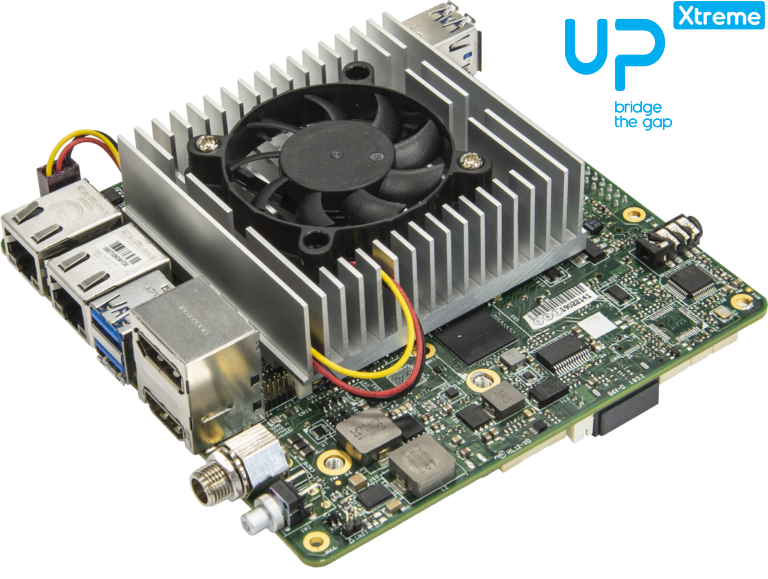
The Up Board Extreme packs quite a punch. Within its 120mm by 120mm form factor, the Up board features an Intel i3-8145UE, i5-8365UE, i7-8665UE, or Celeron 4305UE. On the GPU side, the Up Board comes with either an Intel UHD Graphics 620 for its i-series CPUs or an Intel UHD Graphics 610 with the Celeron model. An AI-ready board, the Up Xtreme packs four TOPS (trillion operations per second) into its mPCIe expansion chips along with a neural compute engine that can deliver one TOPS. For artificial intelligence making in a seriously small form factor, the Up Board Xtreme truly is an extremely capable maker board. You can expect to pay quite a lot for the i3, i5, and i7 models. The top-of-the-line i7-equipped Up Xtreme costs a whopping $1K. Granted, you get some excellent AI-capable hardware, albeit for a hefty fee.
Pros:
- AI-capable
- Available with Intel Celeron, i3, i5, or i7 CPUs
- Intel UHD Graphics 620 or 610 iGPU
- Small 120mm x 120mm form factor
- Can run Windows 10, Linux OSes, and more
Cons:
- Expensive - i7 models retail for $800-$1,000 USD
Up Board specs:
- Intel 8th gen Dual/Quad Core Ultra-Low Power 15W i3-8145UE (up to 3.9 GHz), i5-8365UE (up to 4.1 GHz), i7-8665UE (up to 4.4 GHz), Celeron 4305UE
- Intel UHD Graphics 620 (Core i)/Intel UHD Graphics 610 (Celeron)
- 1 x HDMI, 1 x eDP
- 1 x eMMC, 1 x SATA, 2 x M.2, 1 x mPCIe
- 2 x Gigabit Ethernet
- 4 x USB 3.0, 2 x USB 2.0
- 40-pin GPIO header
- Dimensions: 120 mm x 120mm
- Windows 10, Linux, and more OS compatibility
Best Budget x86 SBC - Rock Pi X
Whereas most x86 maker boards cost at least a few hundred dollars, the Rock Pi X from Raxda is a budget-priced SBC. At under $40, the Rock Pi X can run Windows 10. It comes in two variants, the ROck Pi X version A and version B. Model A lacks Wi-Fi and Bluetooth, and comes with just 1GB of RAM. There's also a Model A with 2GB of RAM for $49, and a 4GB Model A for $65. Stepping up to the Rock Pi X Model B you'll get 802.11ac Wi-Fi, Bluetooth 4.2, and 1GB, 2GB, or 4GB of RAM. The 4GB Rock Pi X Model B retails for $74 which, considering that it runs Windows 10 and Linux desktop distros, is a phenomenal value. Although Windows 10 is probably a bit challenging for the under-powered Rock Pi X, for basic tasks it should be just fine. And the price makes it a no-brainer. For Linux, the Rock Pi X should run virtually any distro flawlessly. Unfortunately, the 1GB of RAM Rock Pi X can only run a 32-bit version of Windows 10 since the 64-bit version needs a minimum of 2GB RAM.
Pros:
- Up to 4GB of RAM
- Wi-Fi and Bluetooth 4.2 (Rock Pi X Model B only)
- Incredibly affordable - excellent price-to-performance ratio
Cons:
- 1GB model can't run 64-bit Windows OSes, just 32-bit Windows 10
- Somewhat underpowered for Windows 10
- Model A lacks Wi-Fi and Bluetooth
Rock Pi X specs:
- CPU: Intel Atom x5-Z8350 Cherry Trail
- GPU: Intel HD Graphics
- eMMC module, microSD card slot
- HDMI 2.0 with 4K @ 30 support
- Wi-Fi and Bluetooth 4.2 (Model B only, not Model A
- 3.5mm headphone jack
- 40-pin GPIO header
- RTC
- Dimensions: 85mm x 54mm
- Runs Windows 10, Linux, and more
Odroid H2
The Odroid H2 with its Intel Celeron J4105 quad-core processor and Intel UHD Graphics 600 provides NUC-caliber performance. It features up to 32GB of DDR4 RAM alongside M.2 PCIe as well as SATA expansion slots. 4K video output at 60Hz is possible, and the CPU/GPU combo can even handle Wii emulation, an impressive feat. Dual Gigabit Ethernet ports provide Internet capabilities, plus there's a 20-pin GPIO header onboard. Unfortunately, HardKernel doesn't include Wi-Fi for wireless networking or Bluetooth connectivity. But it's easy enough to add a wireless networking dongle. There are several different cases for the Odroid H2, and it makes a great network-attached storage device.
Pros:
- Intel Celeron J4105 quad-core processor, Intel UHD Graphics 600 GPU
- Up to 32GB DDR4 RAM
- HDMI 2.0 and Display Port 1.2, 4K @ 60 Hz capable video out
- 20-pin GPIO header
- Runs Windows 10, Linux, and more
Cons:
- No Bluetooth or Wi-Fi
Odroid H2 specs:
- Intel Celeron J4105 quad-core processor with Intel UHD Graphics 600 SoC
- Dual-channel Memory DDR4-PC19200 (2400MT/s) up to 32GB RAM
- M.2 PCIe 2.0 x4 slot for one NVMe storage, 2x SATA 3.0 ports, eMMC flash support
- HDMI 2.0 up to 4K (4096×2160) @ 60 Hz and DisplayPort 1.2 up to 4K (4096×2160) @ 60 Hz
- Headphone and microphone audio jacks, S/PDIF
- 2x Gigabit Ethernet (RJ45)
- 20-pin header with I2C and UART (3.3V)
- RTC battery
- PSU: 14V to 20V DC power input
Up Squared
The Up Squared is a blisteringly fast single-board computer. Driven by an Intel Atom processor, the Up Squared boasts a 40-pin GPIO header, USB 3.0, a pair of Gigabit Ethernet ports, HDMI, and a slew of other features. It's ideal for multiple solutions such as IoT, smart home automation, robotics, digital signage, and more. Scalable and flexible, the Up Squared fulfills many needs
Pros:
- Intel Atom or Celeron processors
- Intel Gen9 HD graphics
- 4K video output capable
- HDMI and DisplayPort
- Runs Windows, Linux, and more
- Affordable
Cons:
- Not the most powerful CPU/GPU combo
Up Squared specs:
- Intel Celeron, N3350 (up to 2.4 GHz), Intel Pentium N4200 (up to 2.5 GHz), Intel Atom x5-E3940 (up to 1.8Ghz)/x7-E3950 ( up to 2.0GHz)
- Up to 8GB LPDDR4
- Intel Gen 9 HD Graphics with 4K support
- Up to 128GB eMMC
- HDMI 1.4b, DP 1.2
- MIPI-CSI2 2-lane, MIPI-CSI2 4-lane
- 2 x Gigabit Ethernet ports
- USB 2.0, USB 3.0
- 40-pin Pi GPIO header, RTC
- Runs Windows, Linux, and more
- Dimensions: 85.60 mm × 90 mm
Atomic Pi
The Atomic Pi is an incredibly powerful Intel Atom-powered SBC. It's ridiculously low priced and works wonderfully for a ton of purposes including NAS use, emulation, and basic desktop use. The x86-64 based maker board packs in loads of features including some niche touches like an XMOS audio driver and onboard 12v speaker amp. That's because the Atomic Pi was intended for industrial Internet of Things (IIoT) rather than residential use. Still, its commercial-grade intertial tracking sensor is a solid addition to its comprehensive spec sheet. Well-priced and with tons of specs, the Atomic Pi is one of the best x86 SBCs you can buy, and a compelling Raspberry Pi alternative.
Pros:
- Runs Windows, Linux, and more
- Intel Atom quad-core CPU
- Intel integrated HD graphics
- 2GB DDR3 RAM
- Powerful, and great for many purposes including emulation, IoT, and more
- Affordable
Cons:
- Some industrial features may be overkill
Atomic Pi specs:
- CPU: Intel Atom x5-Z8350 quad-core with 2M Cache.
- GPU: Integrated Intel HD Graphics
- RAM: 2GB DDR3L-1600
- Storage: 16GB eMMC, MicroSD slot
- Graphics: Full HDMI port & primary audio out Ports: USB 3.0, USB 2.0 "camera" connector
- Connectivity: Dual-band Wi-FI b/g/n/ac 2.4 & 5GHz Wi-Fi RT5572, Bluetooth 4.0, Gigabit RJ45 Ethernet
- Sensors: 9-axis inertial navigation sensor with compass (BNO055)
- Audio: HDMI (Primary), XMOS audio output with Class-D power amp (Secondary)
- Power: 5V. Typically 4-15 watts, optional separate 12v power supply for the audio amp.
- GPIO: 26-pin Power and GPIO pins below, TTL serial debug, and expansion serial ports up to 3.6Mbps above.
- Extras: Real-time clock & battery
Best x86 SBCs You can Buy - Best Maker Boards for Running Windows 10, Linux, and More
Overall, there are tons of x86 single-board computers on the market. The UDOO Bolt is arguably the most powerful x86 SBC and features a fantastic price-to-performance ratio. UDOO also offers its aptly-named UDOO x86 in several variants. Seeed Studio's Odyssey x86J4105 is a good maker board that can run Windows. DFRobot offers the LattePanda Alpha and Delta dev boards. The Atomic Pi ushers commercial-grade specs into the home with a well-priced mini PC. For the cheapest SBC capable of running Windows, the Rock Pi X is a credit-card-sized maker board that can handle Windows 10. Ultimately, there are plenty options at a variety of price points.
Your turn: Which x86 SBCs do you recommend?






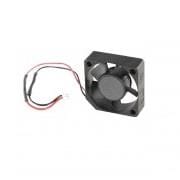
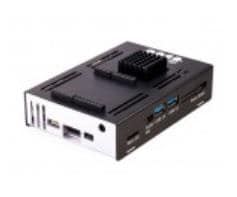
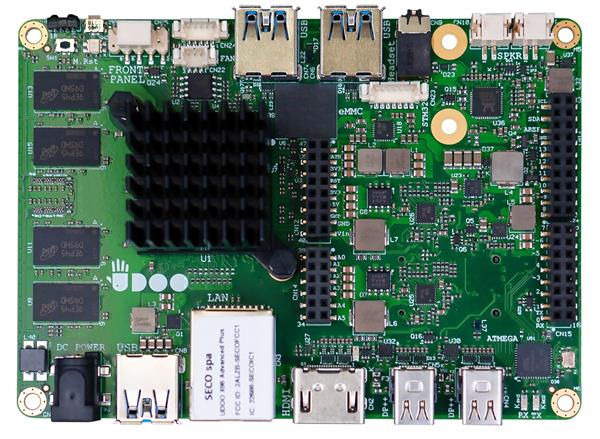
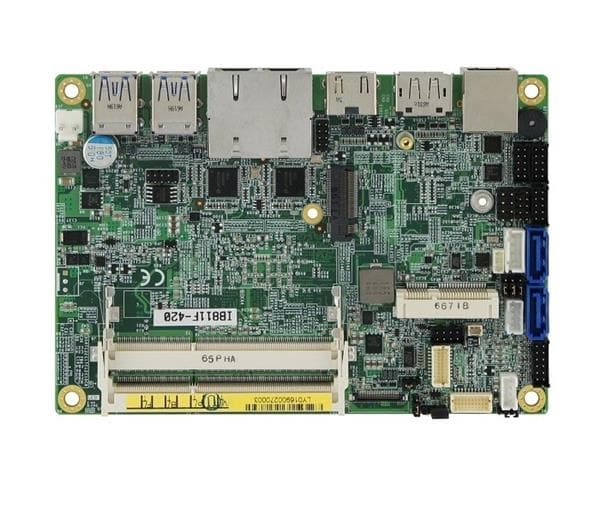
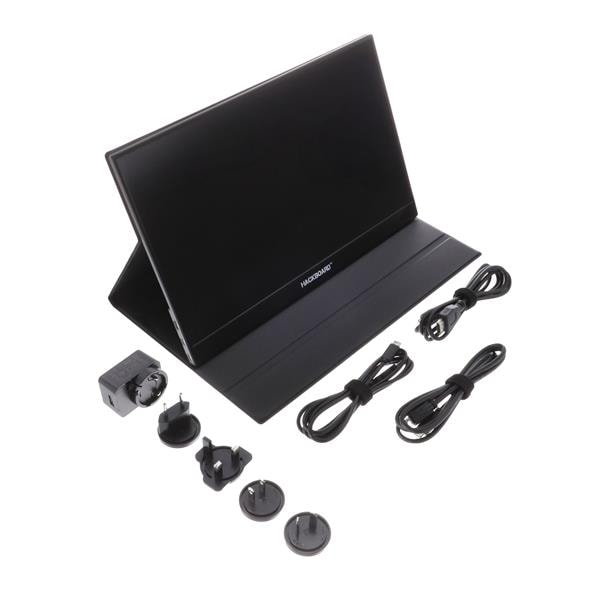
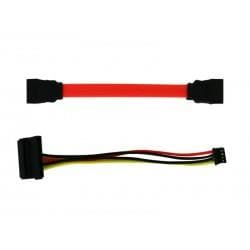

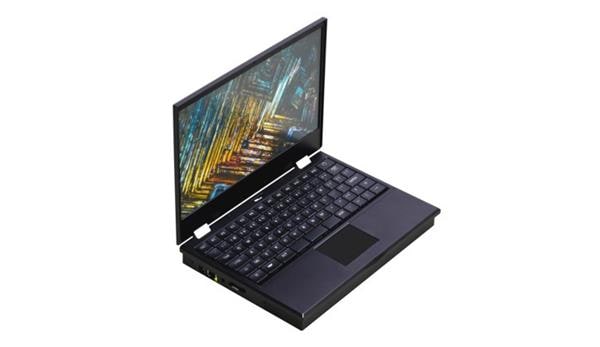

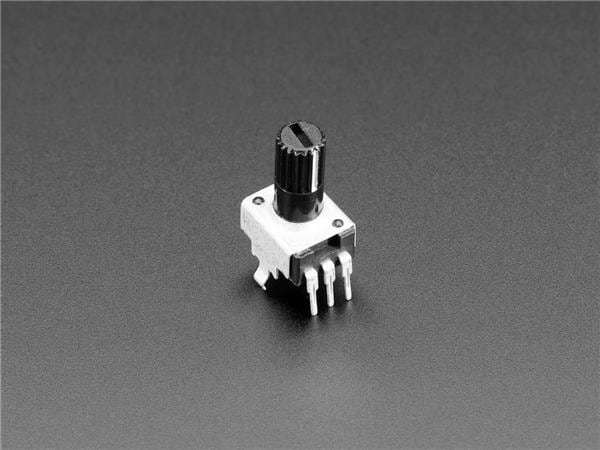
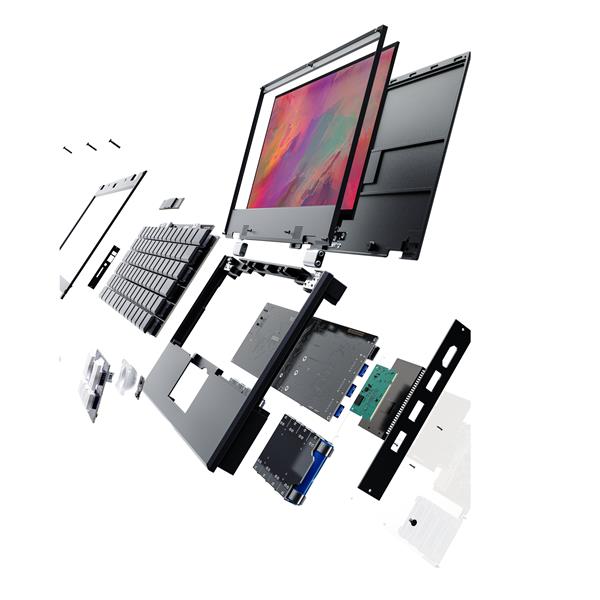
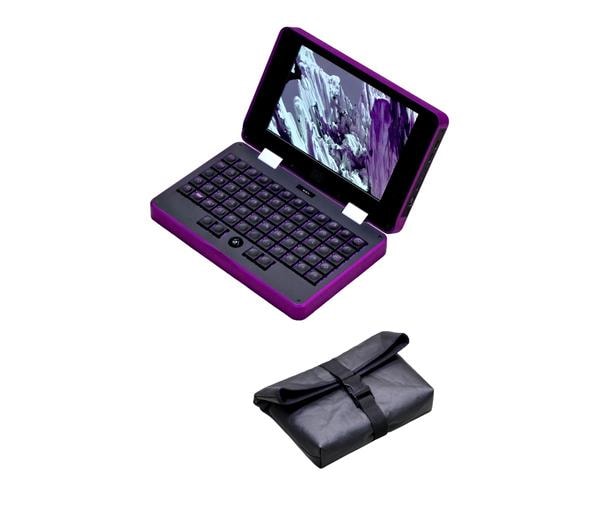

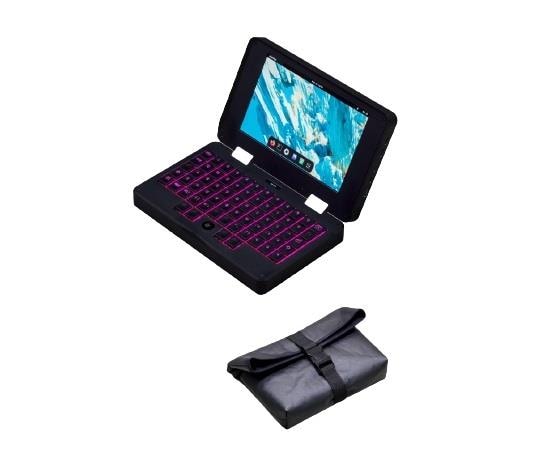

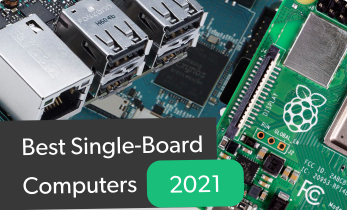
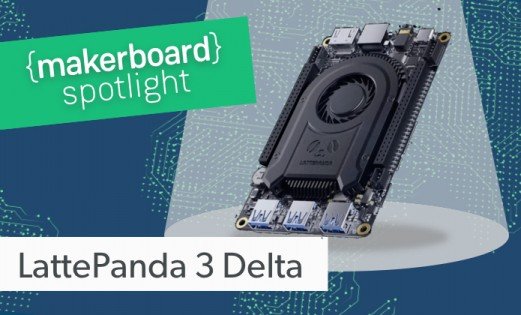
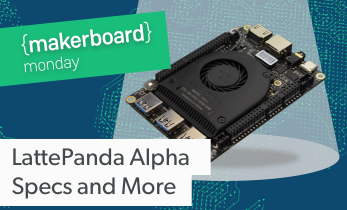
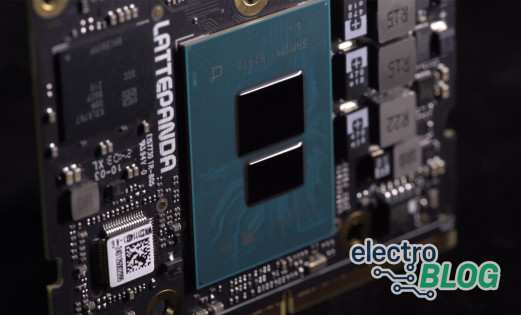
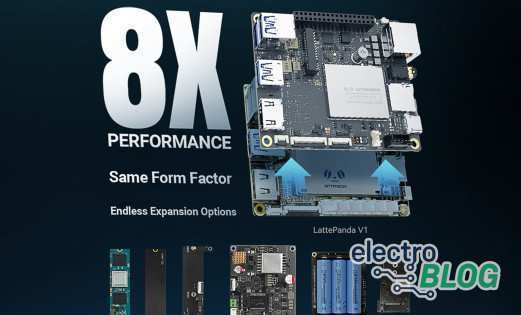
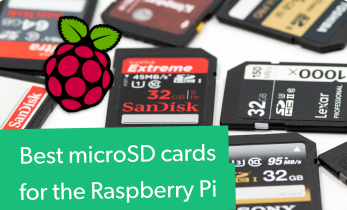
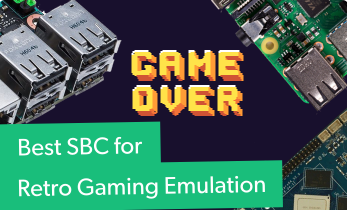
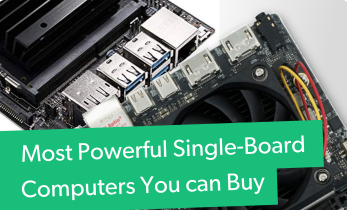
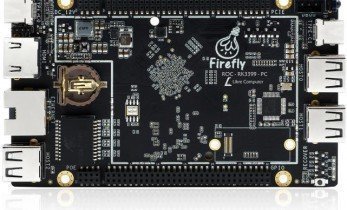

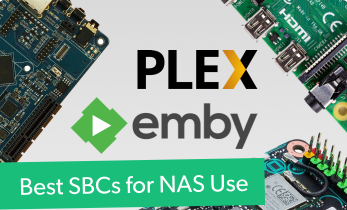
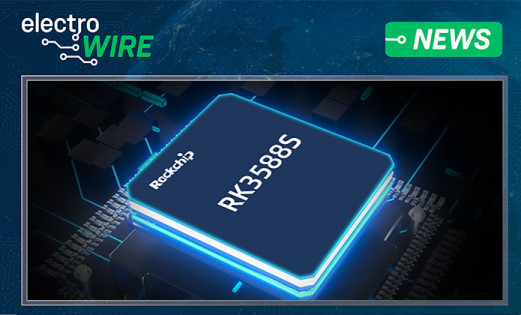
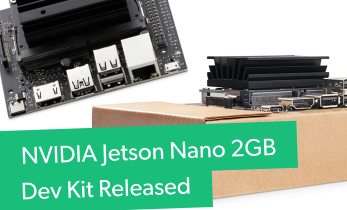
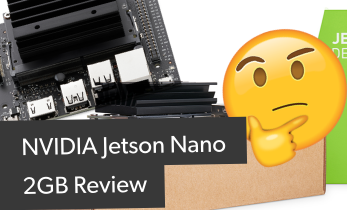

Leave your feedback...